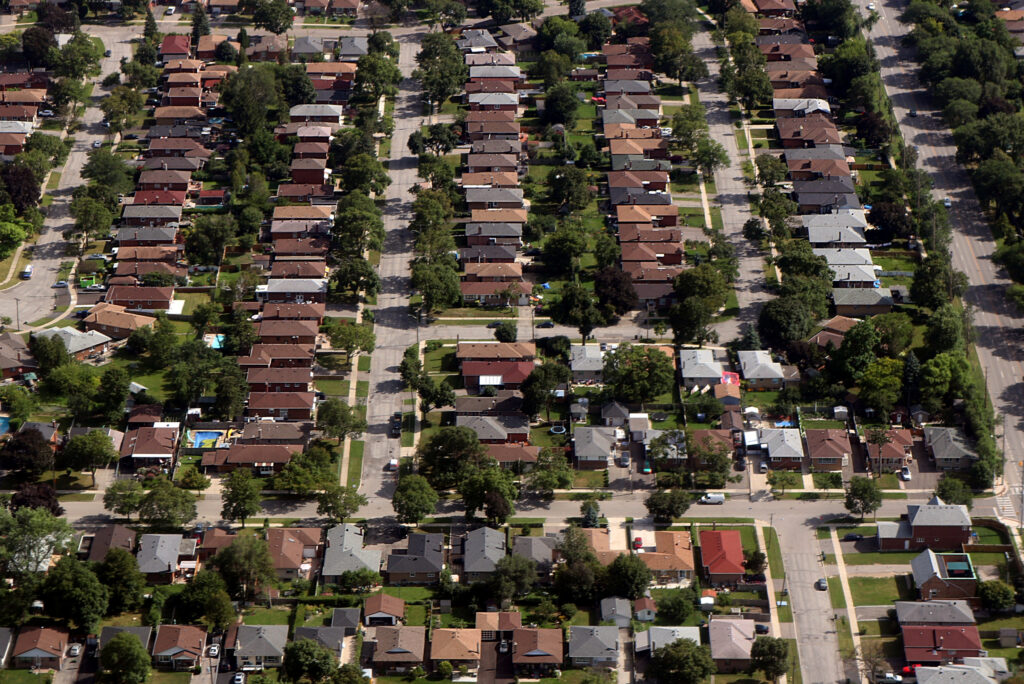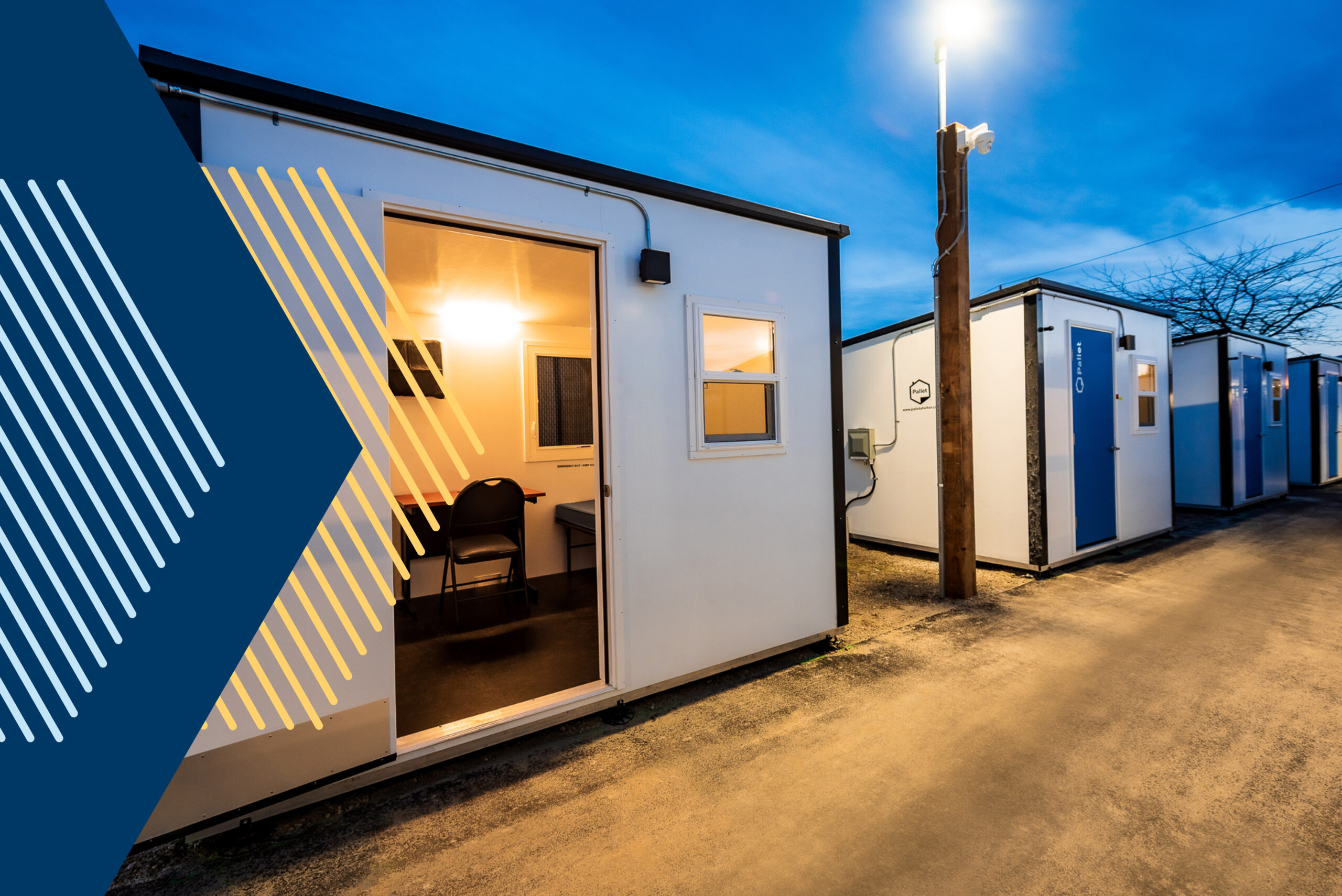How Climate-Related Disasters Magnify the Housing Crisis
August 19, 2024
Extreme weather and displacing climate-related events are becoming more and more common, introducing unparalleled stress on an already strained housing market.

Soaring rental and property prices, bloated interest rates, exorbitant mortgages—it’s plain that the housing crisis has reached new levels of severity. Half of U.S. renters spend 30% or more of their income on rent, while nearly 20% of all homeowners are cost-burdened. Recent data shows the country coping with a shocking shortage of 4 to 7 million homes.
Meanwhile, the rate of natural disasters and extreme weather events has drastically increased, bringing unprecedented destruction of property and homes as well as widespread human displacement. In the past five years, the U.S. has experienced an average of 18 billion-dollar climate disasters per year. In 2023 alone, an estimated 2.5 million Americans were forced out of their homes due to weather-related disasters.
Although these two crises may seem distinct from one another, the record number of destructive climate-related emergencies has a direct impact on the housing shortage. If these trends continue on both fronts without significant improvements in housing and insurance policy, affordable housing will become increasingly scarce and displaced populations will be unequipped to recover from disaster—particularly disadvantaged and low-income communities.

Natural Disaster: A “Housing Crisis Multiplier”
Those in lower income brackets who need affordable housing the most are at the highest risk of prolonged displacement in the wake of disaster. A massive shortage of 7.3 million affordable, available rental homes lies at the root of the problem. To make matters worse, affordable housing developments are more likely to be built in disaster-prone areas and are far less likely to be rebuilt after a damaging event.
In a report examining the circumstances surrounding these harsh realities, the Center for American Progress views extreme weather as an “affordable housing crisis multiplier.” Communities most directly affected by structurally racist and classist practices and policies are also the most vulnerable to destructive natural disasters: these neighborhoods are often developed in or near flood-prone areas and heat islands. In the case of an extreme weather event razing low-income housing or rental buildings, emergency relief funds and insurance payouts are typically distributed to wealthier homeowners, in effect displacing those low-income groups with little to no housing support or adequate long-term solutions.
Even properties that were initially developed specifically to meet the needs of lower-income communities have over time become unattainable. One analysis shows approximately 60% of 15 million low-cost rental units that existed in 1985 were no longer affordable by 2013.
These patterns not only perpetuate displacement and housing poverty among vulnerable communities. Increasingly common natural disasters also exacerbate the unsheltered homelessness crisis by both depleting housing supply and compounding physical and mental health challenges for those living unhoused.
Ultimately, the amplifying effects that disasters have on our inadequate housing supply only further illustrate the socioeconomic disparities and unstable foundation of the current real estate market—one that is entirely inaccessible to many lower income residents.
Climate-Related Disasters Stress an Already Strained Market
The coupling of low affordable housing inventory and high demand and prices is intensified by climate-related events. If a disaster depletes available housing in a desirable locale, prices are likely to skyrocket. Experts have even estimated that rents can double overnight due to displaced residents.
These extremes are best demonstrated in at-risk areas of the country such as Florida, California, and Southern Texas, which are vulnerable to destructive disasters and climate impacts as well as subject to inflated property values. This renders these areas attainable only for wealthy populations who can afford heightened prices and costly disaster insurance.
Insurance agencies and lenders stand at the core of an impending shift in the market, placing attainable housing even further out of reach for low-income renters and potential homeowners. The risks of flooding and wildfires have led experts to predict a “climate bubble” for real estate, with the possibility of a massive crash in home values based on a property’s likelihood of being struck by disaster. One 2023 study found that national property prices are overvalued by between $121 billion and $237 billion when compared to their actual flood risk.
In regions like Louisiana, Florida, and California, the high frequency of wildfires, hurricanes, and flooding has already made homeowner’s insurance prohibitively expensive or simply impossible to obtain. If insurers and lenders pull out of these areas and subsequently reassess property and home values based on disaster vulnerability, people are likely to face enormous losses in their assets. This, in turn, has the potential to activate mass panic selling and a market crash comparable to the 2008 recession.
In this volatile and imbalanced market, alternative options that can accommodate vulnerable and displaced populations are urgently needed—regardless of socioeconomic status or quality of insurance.
Interim Models as Paths to Recovery
A number of steps can be made to improve outcomes for all residents and mitigate a deteriorating market in the wake of natural disasters. Developing robust preparedness strategies that prioritize the well-being of vulnerable communities, including those experiencing homelessness and housing instability, is one such measure.
By creating more equitable options for those displaced by extreme weather and climate-related disaster, communities can build true resilience. Instead of housing survivors and responders in cost-prohibitive hotel rooms and rental properties, which is expensive for taxpayers and disrupts local economic recovery, interim shelter and housing models enable residents to stay within their community. This rapid, cost-effective, and dignified option allows displaced individuals and families a private living space while attainable permanent housing is rebuilt.
Natural disasters, extreme weather, and a shortage of adequate and attainable housing are issues that are sure to persist or even worsen. The only path forward is to embrace innovative strategies that meet the immediate needs of vulnerable populations and those displaced by climate-related events, providing relief and stability while enough permanent housing is built for everyone.


